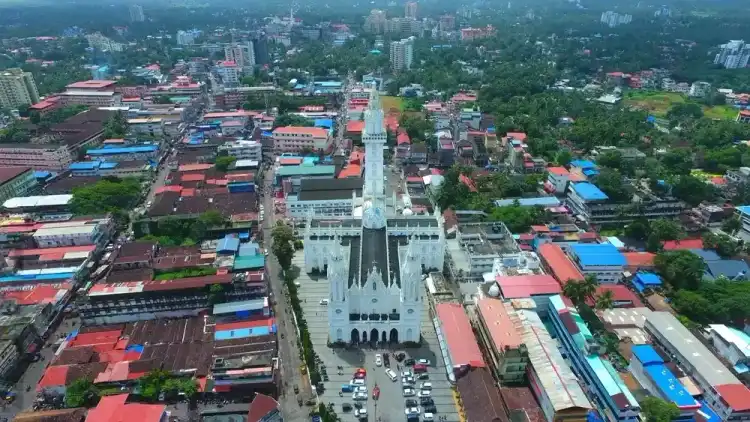A Comprehensive Guide to Thrissur District
Introduction
Thrissur, often referred to as the cultural capital of Kerala, is a district that captivates with its rich history, vibrant culture, and picturesque landscapes. Nestled in the southwestern part of India, Thrissur is a blend of ancient traditions and modern advancements, making it a unique destination for both tourists and scholars.
Demography
Thrissur district is home to a diverse population, characterized by a harmonious coexistence of various communities and religions. According to the latest census data, the district has a population of approximately 3.2 million people. The demographic composition includes Hindus, Christians, and Muslims, with a significant presence of Scheduled Castes and Scheduled Tribes. This diversity is reflected in the district's festivals, languages, and daily life.
Population Distribution
Culture
Thrissur is renowned for its vibrant cultural heritage, which encompasses various art forms, festivals, and traditions. The district is famous for the Thrissur Pooram, a grand temple festival featuring an impressive display of caparisoned elephants, traditional percussion music, and fireworks. Kathakali, Mohiniyattam, and Koodiyattam are some of the classical dance forms that thrive in Thrissur, supported by institutions like Kerala Kalamandalam.
Festivals
- Thrissur Pooram: Known as the mother of all temple festivals in Kerala.
- Onam: Celebrated with traditional games, dances, and feasts.
- Christmas and Easter: Marked by vibrant celebrations, especially in the Christian communities.
Geography
Thrissur is strategically located in central Kerala, bordered by the districts of Palakkad, Malappuram, Ernakulam, and Idukki. The district covers an area of about 3,032 square kilometers, featuring a diverse topography that includes coastal plains, highlands, and river basins.
Key Geographic Features
- Rivers: Chalakudy, Periyar, and Bharathapuzha.
- Hills: The Western Ghats run along the eastern boundary, providing a backdrop of lush greenery and wildlife.
- Beaches: Snehatheeram and Chavakkad beaches are popular tourist spots.
Cuisines
The culinary landscape of Thrissur is a reflection of its cultural diversity and agricultural abundance. The cuisine here is known for its rich flavors, use of coconut, and a variety of spices.
Popular Dishes
- Puttu and Kadala Curry: A traditional breakfast combination.
- Meen Pollichathu: Fish marinated in spices and cooked in banana leaf.
- Vellayappam and Chicken Stew: A delightful combination often served during special occasions.
History
Thrissur's history dates back to ancient times, with evidence of human settlement during the Megalithic period. It has been a prominent center for Hinduism, Buddhism, and Christianity over the centuries.
Historical Timeline
- Ancient Period: Thrissur was part of the Chera Dynasty.
- Medieval Period: Became a significant center for trade and commerce.
- Colonial Period: Witnessed the influence of Portuguese, Dutch, and British rule.
- Post-Independence: Evolved as a cultural and educational hub in Kerala.
Notable Poets and Authors
Thrissur has produced several renowned poets and authors who have made significant contributions to Malayalam literature.
Prominent Figures
- Vallathol Narayana Menon: A celebrated poet and the founder of Kerala Kalamandalam.
- Changampuzha Krishna Pillai: Known for his romantic poetry.
- O.V. Vijayan: A distinguished novelist and cartoonist.
Administration
The administrative structure of Thrissur is well-organized, ensuring efficient governance and development. The district is divided into several taluks, each managed by a Tahsildar.
Administrative Divisions
- Taluks: Thrissur, Chavakkad, Kunnamkulam, Kodungallur, and others.
- Municipalities: Thrissur Municipal Corporation is the largest urban local body.
Conclusion
Thrissur district, with its rich cultural heritage, diverse population, and stunning natural landscapes, stands as a testament to Kerala's historical and cultural grandeur. Its vibrant festivals, mouth-watering cuisine, and significant contributions to literature and the arts make it a unique and fascinating destination. As Thrissur continues to evolve, it remains deeply rooted in its traditions, offering a perfect blend of the past and the present.
